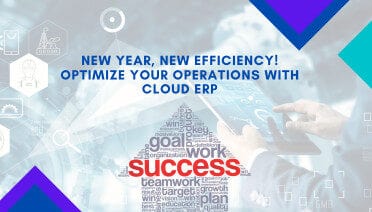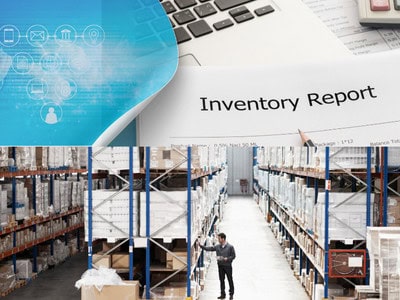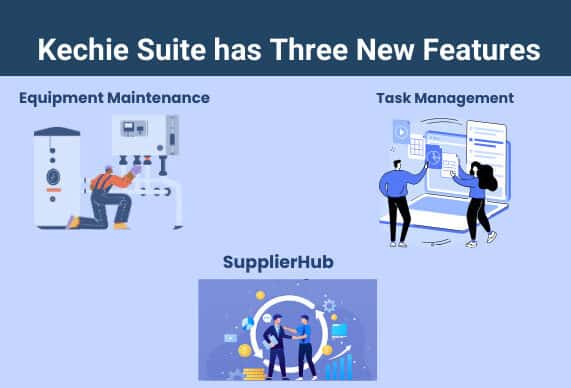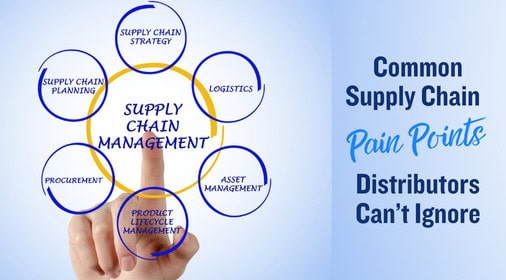Business Process Optimization with ERP
Business Process Optimization with ERP
What is an ERP System?
ERP, or Enterprise Resource Planning, refers to software solutions designed to manage and integrate various business functions like finance, human resources, inventory, and customer relationships.
ERP Definition and History
At its core, ERP consolidates disparate systems into a unified platform, enabling seamless data flow across departments. The concept originated in the 1960s with material requirements planning (MRP) systems for manufacturing. Over time, ERP solutions evolved to include additional business functions, becoming a cornerstone for organizational efficiency.
Features of ERP systems include:
- Centralized data management
- Modular design tailored to specific needs
- Real-time reporting and analytics
- Automation of routine tasks
The Role of ERP in Business Process Optimization
ERP systems are designed to streamline and standardize processes across an organization.
Process Integration
An ERP solution eliminates silos by integrating data from all departments, ensuring consistency and accuracy. For example, inventory data flows seamlessly into sales and procurement, reducing redundancy and errors.
Automation and Efficiency
ERP software automates routine tasks, such as invoice processing and payroll management, freeing up resources for strategic initiatives.
Real-Time Insights
With built-in analytics, ERP systems provide actionable insights, enabling businesses to make data-driven decisions and respond swiftly to market changes, and enhance customer satisfaction.
Advantages and Disadvantages of ERP Systems
Advantages
- Increased Efficiency: Automation minimizes manual tasks and reduces errors.
- Enhanced Collaboration: A centralized system fosters better communication across departments.
- Scalability: ERP solutions grow with the business, adapting to increased demands.
- Regulatory Compliance: ERP systems often include features to meet legal and industry standards.
Disadvantages
- High Initial Costs: Implementation and customization can be expensive.
- Complexity: ERP systems require significant time and expertise to set up and maintain.
- Training Requirements: Employees need comprehensive training to use ERP software effectively.
Benefits of Implementing ERP Solutions
Investing in ERP systems yields substantial long-term benefits.
- Streamlined Operations: ERP consolidates processes, reducing duplication and inefficiencies.
- Improved Decision-Making: Real-time data enhances strategic planning.
- Cost Savings: Automation and optimization reduce operational costs.
- Enhanced Customer Satisfaction: Faster response times and accurate order fulfillment build trust and loyalty.
Challenges in ERP Implementation
Implementing an ERP system is not without challenges:
- Resistance to Change: Employees may be hesitant to adapt to new systems.
- Customization Issues: Tailoring ERP solutions to fit unique business needs can be complex.
- Data Migration: Transferring data from legacy systems to ERP software requires meticulous planning.
Overcoming Challenges
Organizations can effectively address these challenges through a multi-faceted approach. This includes meticulous planning that considers the specific needs and goals of the organization. Furthermore, comprehensive training programs are essential to equip employees with the necessary skills and knowledge to navigate the evolving environment. Finally, engaging experienced implementation partners can provide valuable guidance and support throughout the process, ensuring a smooth and successful transition. By implementing these strategies, organizations can minimize implementation challenges, ensuring a successful system rollout, and delivering improved efficiency, productivity, and a greater return on investment.
Conclusion
ERP systems play a pivotal role in business process optimization by integrating and automating workflows. Despite challenges in implementation, the benefits of ERP—such as improved efficiency, cost savings, and data-driven decision-making—make it an indispensable tool for businesses. As technology advances, ERP solutions will continue to evolve, offering even greater potential for process optimization.
Start the Year Strong with ERP: A Guide to Transforming Your Business Operations
Start the Year Strong with ERP: A Guide to Transforming Your Business Operations
If you're looking to start the year on the right foot, here's why ERP should be on your priority list—and how it can transform your business.
Why the New Year Is the Best Time to Invest in ERP
The beginning of the year offers a unique opportunity to implement transformative changes. Here’s why ERP adoption aligns perfectly with this timing:
1. Fresh Budget Allocation: The new year often comes with renewed budgets, allowing businesses to allocate resources for technology upgrades like ERP systems.
2. Operational Reset: Starting with an ERP system early enables businesses to streamline operations and avoid inefficiencies throughout the year.
3. Scalability for Growth: As businesses set ambitious goals, ERP provides the flexibility and tools to support expansion.
4. Improved Reporting for Strategy: Leverage ERP’s robust reporting features to analyze the previous year's performance and guide new initiatives.
Benefits of Starting the Year with ERP
1. Centralized Data Management
An ERP system like Kechie ERP integrates all your critical business functions—finance, inventory, manufacturing, sales, and more—into a single platform. This ensures that your data is accurate, up-to-date, and easily accessible for better decision-making.
2. Streamlined Processes
With ERP, manual processes like data entry, reconciliations, and inventory tracking are automated. This reduces errors and frees up your team to focus on strategic tasks.
3. Real-Time Insights
ERP provides real-time dashboards and reports, enabling you to monitor key performance indicators (KPIs) and adjust strategies as needed.
4. Enhanced Collaboration
By breaking down departmental silos, ERP fosters better communication and collaboration across teams, improving overall efficiency.
5. Future-Ready Scalability
A modern ERP system is designed to grow with your business, accommodating increased workloads, additional users, integration with e-commerce partners and new functionalities as needed.
ERP Myth: It’s Only for Big Businesses
One of the biggest misconceptions about ERP is that it’s only for large corporations. This myth couldn’t be further from the truth. Modern ERP solutions are scalable and customizable, making them accessible for small and mid-sized businesses.
Whether you’re a growing company or an established enterprise, ERP systems provide tools to manage operations efficiently and stay competitive in your industry.
Curious to learn more ERP Myth? Watch our video debunking common ERP Myths and see how businesses of any size can benefit.
How to Start the Year Strong with ERP
-
- Evaluate Your Needs
Assess your business operations to identify pain points and inefficiencies. Consider areas where ERP can bring immediate improvements, such as inventory management, financial reporting, or customer relationship management (CRM).
-
- Research ERP Solutions
Not all ERPs are created equal. Look for a solution tailored to your industry and business size, with features like scalability, user-friendly interfaces, and robust reporting tools.
-
- Plan for Implementation
Set realistic timelines for ERP implementation. The new year provides a clear starting point for introducing new processes and training your team.
-
- Engage Your Team
Involve key stakeholders from all departments to ensure the ERP system aligns with your operational goals and workflows.
-
- Partner with the Right Provider
Choose an ERP provider with a proven track record of successful implementations and excellent customer support.
Kechie ERP: Your Partner for Success in the New Year
If you’re ready to take your operations to the next level, Kechie ERP offers a comprehensive solution tailored to your needs. Key features include:
- Real-Time Reporting: Access accurate data and actionable insights instantly.
- Inventory Optimization: Track inventory levels and avoid costly overstock or stockouts.
- Financial Automation: Kechie Financial Module offers simplify accounting and tax compliance with automated workflows.
- Scalable Modules: Add functionalities as your business grows without disruptions.
Conclusion: Make This Year Count
The new year is a time of fresh beginnings and ambitious goals. Implementing an ERP system is more than a resolution—it’s an investment in your business’s future. With an ERP, you can streamline operations, improve decision-making, and set the stage for long-term success.
Start the year strong! Connect with us today and let our expert team guide you through the process of discovering the transformative potential of our solutions.
Stay tuned for our series of insightful blogs—your roadmap to exploring the full potential of ERP.
Inventory Valuation: The Key to Accurate Financial Reporting
Understanding Inventory Valuation: A Critical Step in Year-End Reconciliation
As the year draws to a close, businesses face the challenge of closing their books and preparing financial statements. One critical aspect of this process is inventory valuation. Proper inventory valuation ensures accurate financial reporting, supports tax compliance, and provides insights into overall business performance.
In this blog, we’ll delve into the importance of inventory valuation for year-end reconciliation, explore common valuation methods, and discuss how ERP systems can simplify the process.
What Is Inventory Valuation?
Inventory valuation is the method used to assign a monetary value to the inventory a business holds at the end of a financial period. It directly impacts the cost of goods sold (COGS), gross profit, and net income reported in financial statements.
An accurate valuation not only reflects the true financial health of a business but also aids in better decision-making for the year ahead.
Why Inventory Valuation Matters for Year-End Reconciliation
1.Ensures Accurate Financial Reporting
Inventory is often one of the largest assets on a company’s balance sheet. Misstating its value can distort financial statements, affecting stakeholder confidence and decision-making.
2. Supports Tax Compliance
Accurate inventory valuation helps businesses calculate taxable income correctly. Overstated or understated inventory values can lead to tax penalties or missed deductions.
3. Affects Key Metrics
Metrics like gross profit margin and inventory turnover are directly influenced by inventory valuation. These figures are essential for assessing operational efficiency and planning future strategies.
4. Simplifies Reconciliation
Consistent and accurate valuation methods make it easier to reconcile inventory records with financial statements, reducing errors and audit risks.
Common Inventory Valuation Methods
Businesses typically use one of the following methods to value their inventory:
1.FIFO (First-In, First-Out)
-
- Assumes the oldest inventory is sold first.
- Ideal for businesses where inventory costs increase over time, as it minimizes COGS and maximizes reported profits.
2. LIFO (Last-In, First-Out)
-
- Assumes the newest inventory is sold first.
- Commonly used in industries with rising inventory costs, as it increases COGS and reduces taxable income.
3. Weighted Average Cost
-
- Calculates inventory value based on the average cost of all items available for sale.
- Useful for businesses with large volumes of similar inventory.
4. Specific Identification
-
- Tracks the cost of each specific inventory item.
- Suitable for high-value or unique items like custom machinery or luxury goods.
How ERP Systems Simplify Inventory Valuation
ERP systems play a vital role in ensuring accurate and efficient inventory valuation. Here’s how:
1. Real-Time Tracking
Monitor inventory levels, movements, and costs in real time, reducing manual errors and ensuring accurate data.
2. Automated Valuation
ERP systems automatically calculate inventory value using your chosen method (FIFO, LIFO, weighted average, etc.).
3. Cycle Count Reconciliation Support
Effortlessly compare physical inventory counts with system records to identify discrepancies before closing the books.
4. Audit Trail
Maintain a comprehensive record of inventory transactions, aiding in compliance and simplifying audits.
5. Integrated Reporting
Generate detailed inventory valuation reports to support year-end reconciliation and financial statements.
Steps to Ensure Accurate Year-End Inventory Valuation
1. Conduct a Physical Inventory Count
Verify actual inventory levels by performing a physical count and reconciling it with ERP records.
2. Review Valuation Methods
Ensure your chosen inventory valuation method aligns with industry standards and regulatory requirements.
3. Resolve Discrepancies
Use ERP tools to identify and address discrepancies between recorded and actual inventory.
4. Update Costs
Adjust inventory costs in your ERP to reflect the latest market prices or purchase costs.
5. Generate Reports
Leverage ERP reporting features to create detailed valuation summaries for financial reconciliation.
Why Choose Kechie ERP for Inventory Valuation
Kechie ERP is designed to simplify inventory valuation and streamline year-end reconciliation:
-
- Real-Time Insights: Access up-to-date inventory data at any time.
- Flexible Valuation Methods: Support for FIFO, LIFO, weighted average, and more.
- Reconciliation Tools: Automate processes to identify and resolve discrepancies quickly.
- Customizable Reports: Generate detailed valuation reports tailored to your business needs.
- Scalable Solutions: Whether you’re a small business or a large enterprise, Kechie ERP grows with you.
Conclusion
Inventory valuation is a cornerstone of accurate financial reporting and year-end reconciliation. With the right processes and tools, like an ERP system, you can ensure that your inventory is valued correctly, your financial statements are precise, and your business is prepared for audits and future growth.
Connect with us today, our expert team is here to guide you through the process and help you discover the transformative potential of our solutions.
Stay tuned for our series of insightful blogs—your roadmap to exploring the full potential of ERP.
Why ERP Is Essential for Year-End Financial Reporting
Year-End Financial Reports Made Easy with ERP: Steps to Ensure Accuracy
This is where an ERP system steps in, offering tools to streamline financial reporting, ensure accuracy, and save time. Let’s explore how ERP software simplifies year-end financial reporting and the steps you can take to ensure your data is accurate and compliant.
Why ERP Is Essential for Year-End Financial Reporting
An ERP system like Kechie integrates all your financial data in one place, eliminating the need for spreadsheets and manual consolidations. Here’s how it adds value during year-end reporting:
1. Centralized Data: Access financial, inventory, and operational data from a single platform.
2. Real-Time Reporting: Generate accurate, up-to-date financial reports with minimal effort.
3. Automation: Streamline tasks like account reconciliations and tax calculations.
4. Compliance Support: Ensure adherence to accounting standards and tax regulations.
5. Audit Trail: Maintain a detailed log of transactions for easy auditing.
Steps to Ensure Accuracy in Year-End Financial Reporting
1. Clean Up Your Data
-
- Why It Matters: Inconsistent or incomplete records can lead to inaccurate reports.
- How ERP Helps: Use the data validation and cleansing features in your ERP to identify and correct discrepancies.
- Tip: Regularly reconcile accounts payable and receivable, and perform month-end closing procedures to maintain accurate financial records throughout the year. This practice reduces the workload and stress associated with year-end reporting.
2. Review Chart of Accounts
-
- Why It Matters: A well-organized chart of accounts ensures that all transactions are correctly categorized.
- How ERP Helps: Modify and standardize your chart of accounts within the ERP to simplify reporting.
- Tip: If your company has grown, consider restructuring the chart of accounts to reflect new business units or products.
3. Automate Reconciliations
-
- Why It Matters: Manual reconciliations are time-consuming and prone to errors.
- How ERP Helps: Leverage automated bank reconciliations and intercompany transaction matching.
- Tip: Conduct monthly reconciliations within your ERP to identify and address discrepancies promptly.
4. Monitor Inventory Valuations
-
- Why It Matters: Inventory inaccuracies can skew your financials and impact tax filings.
- How ERP Helps: Track inventory in real-time and use automated valuation methods like FIFO, LIFO, or weighted average.
- Tip: Schedule monthly cycle counts in your ERP to identify and resolve inventory discrepancies early.
5. Generate Preliminary Reports
-
- Why It Matters: Early reports help identify discrepancies and allow time for corrections.
- How ERP Helps: Run trial balance, profit and loss, and cash flow reports directly from the system.
- Tip: Share preliminary reports with department heads for review and approval.
6. Ensure Compliance with Tax Regulations
-
- Why It Matters: Incorrect tax filings can lead to penalties and audits.
- How ERP Helps: Use tax calculation modules to automate calculations and ensure compliance with local regulations.
- Tip: Update your ERP with the latest tax codes and rates before generating reports.
7. Leverage ERP Reporting Tools
-
- Why It Matters: Detailed and customizable reports provide insights for stakeholders.
- How ERP Helps: Utilize built-in reporting templates or customize dashboards to display key financial metrics.
- Tip: Choose the right ERP with drill-down reporting capabilities and versatile export options ensures easy sharing with your team or auditors.
The Role of Kechie ERP in Financial Reporting
Kechie ERP is designed to simplify year-end financial reporting for businesses of all sizes. Here’s how it ensures accuracy and efficiency:
-
-
- Real-Time Data Access: Eliminate delays and discrepancies with up-to-date financial information.
- Customizable Reports: Tailor reports to meet the unique needs of your stakeholders and regulatory bodies.
- Audit Readiness: Maintain a clear audit trail for every transaction, ensuring transparency.
- Multi-Currency Support: Simplify reporting for businesses operating globally.
- Tax Compliance: Automate tax calculations and ensure adherence to ever-changing regulations.
-
Benefits of Using Kechie Financial Management Software for Year-End Reporting
1.Time Savings: Automating tasks like reconciliations and report generation frees up your finance team for strategic planning.
2. Improved Accuracy: Eliminate manual errors and ensure consistent financial data.
3. Compliance Assurance: Stay updated on accounting standards and tax regulations.
4. Enhanced Decision-Making: Provide stakeholders with accurate, real-time financial insights.
5. Stress-Free Audits: Simplify audits with detailed transaction histories and organized financial records.
Conclusion
Year-end financial reporting doesn’t have to be overwhelming. By leveraging the features of an ERP system like Kechie ERP, you can simplify the process, ensure accuracy, and save valuable time. Whether you are preparing for audits, setting next year’s budget, or evaluating business performance, ERP software is the tool you need to succeed.
Connect with us today, our expert team is here to guide you through the process and help you discover the transformative potential of our solutions.
Stay tuned for our series of insightful blogs—your roadmap to exploring the full potential of ERP.
What Are the Top Reasons to Invest in Equipment Maintenance Software?
What Are the Top Reasons to Invest in Equipment Maintenance Software?
Prevent Unplanned Downtime
Unplanned downtime is one of the most disruptive issues a business can face. When essential equipment breaks down unexpectedly, production grinds to a halt, often resulting in missed deadlines, increased labor costs, and unhappy customers. Equipment Maintenance Software minimizes unplanned downtime by providing tools to schedule regular preventive maintenance and track equipment performance. By proactively monitoring equipment health, EMS helps identify potential issues before they become critical, keeping production schedules intact.
Extend Equipment Lifespan
Every machine or piece of equipment has a specific lifespan. However, equipment that undergoes regular, timely maintenance lasts significantly longer than those that are neglected. EMS within Kechie ERP helps businesses keep track of maintenance schedules, ensuring equipment receives the care it needs. From regular lubrication to part replacements, EMS supports proactive maintenance, which extends equipment life, delays replacements, and reduces capital expenditures over time.
Increase Efficiency and Productivity
Effective equipment maintenance is integral to maintaining a productive work environment. EMS simplifies maintenance workflows, from work order creation to task assignment and completion tracking. With mobile access to EMS, technicians can quickly access work orders, log updates, and view repair histories, reducing delays and minimizing the need for manual paperwork. This streamlined approach allows employees to focus on their tasks and reduces time spent on resolving equipment issues, ultimately improving operational efficiency.
Reduce Maintenance Costs
EMS helps organizations make better financial decisions regarding maintenance costs. By reducing the frequency of emergency repairs through preventive maintenance, businesses save on repair expenses and avoid costly overtime labor required to address last-minute issues. EMS also supports inventory management for spare parts, helping companies optimize parts stock levels, reduce excess inventory, and avoid expedited shipping costs for out-of-stock parts.
Maintain Safety and Compliance Standards
Workplace safety and regulatory compliance are vital considerations for businesses that use heavy equipment. A well-maintained machine is less likely to malfunction and cause safety hazards, ensuring a safer work environment for employees. EMS helps companies track and document all maintenance activities, creating a digital log that proves regulatory compliance during audits. Staying compliant not only avoids penalties but also fosters a culture of safety and responsibility in the workplace.
Access Valuable Data and Analytics
EMS provides valuable insights into equipment performance and maintenance history. With detailed data on repair frequency, maintenance costs, and downtime, businesses can make informed decisions about asset utilization and capital investment. EMS analytics can reveal trends that inform long-term maintenance strategies, such as identifying underperforming equipment or recognizing the ideal time for replacements. This data-driven approach enables businesses to optimize asset management, budgeting, and planning.
Improve Scheduling and Resource Allocation
EMS simplifies maintenance scheduling and resource allocation, ensuring that the right technicians, tools, and spare parts are available when needed. With Kechie EMS, companies can create automated maintenance schedules based on factors like usage, time, or performance metrics. This level of organization prevents over-scheduling, avoids unnecessary maintenance tasks, and ensures that resources are effectively used.
Enhance Communication Across Teams
For maintenance tasks to be completed effectively, clear communication between departments is crucial. Kechie EMS allows teams to centralize maintenance requests, updates, and work orders on a single platform accessible to all involved parties. This ensures that employees from different departments—such as production, logistics, and maintenance—have a unified view of equipment status, maintenance schedules, and any upcoming tasks.
Conclusion
Staying ahead in a competitive market requires smart solutions like Kechie EMS. This comprehensive Equipment Maintenance Software helps businesses cut expenses, improve efficiency, and foster safe working environments. Whether it’s reducing downtime, maximizing asset longevity, or simplifying communication, Kechie EMS equips your business for smooth operations and lasting success.
Connect with us today, our expert team is here to guide you through the process and help you discover the transformative potential of our solutions.
Stay tuned for our series of insightful blogs—your roadmap to exploring the full potential of ERP.
My Office Apps Partners with New Life Centers
MOA Partners with New Life Centers to Streamline Inventory Management with Kechie
By adopting Kechie, New Life Centers gains a user-friendly and robust inventory management system, ensuring real-time tracking, streamlined ordering, and reliable oversight of critical resources. Kechie’s advanced capabilities allow organizations like New Life Centers to focus on their core objectives without the complexities and delays of traditional inventory management.
Read more on EIN Presswire
Are These ERP Myths Holding You Back?
Are These ERP Myths Holding You Back? 6 Myths Busted!
When it comes to Enterprise Resource Planning (ERP) systems, there’s a lot of buzz. ERP is often hailed as the backbone of modern business operations, streamlining everything from inventory management to finance. But for all the praise, there are still many myths circulating that can leave businesses hesitant or misinformed. In this post, we’ll tackle the biggest myths about ERP and shed light on what they really bring to the table. By dispelling these misconceptions, we hope you’ll see why an ERP solution could be a game-changer for your business.
Reality Check: ERPs aren’t exclusive to Fortune 500 giants! Many small to medium-sized businesses (SMBs) think they don’t need ERP, but that couldn’t be further from the truth. In fact, SMBs often benefit significantly from ERP implementation because it helps them manage their resources more efficiently as they grow. Today’s ERP systems, like Kechie ERP, are scalable, designed to grow with your business. They are accessible, flexible, and customizable, which means small businesses can leverage the same high-level tools without the massive price tag.
Myth #2: ERP Systems Are Too Expensive
Reality Check: Yes, ERP systems were once prohibitively costly, especially when businesses had to invest in expensive hardware and infrastructure. But with cloud-based ERP solutions like Kechie ERP, the landscape has changed. Cloud-based ERP systems are more affordable and accessible, offering subscription-based models that eliminate high upfront costs. This makes ERP solutions a sound investment with high ROI, where the savings in time, accuracy, and efficiency often outweigh the costs.
Myth #3: Implementing ERP Takes Too Long
Reality Check: Implementing any new system requires planning, but modern ERPs are designed to be deployed much faster than the legacy systems of the past. With streamlined implementation processes and guided onboarding, businesses can often see ERP systems up and running in a matter of weeks rather than years. A solution like Kechie ERP, with its user-friendly interface, can quickly integrate with existing systems, minimizing disruption to business operations.
Myth #4: ERPs Are Overly Complex
Reality Check: ERPs have a reputation for being difficult to understand and navigate, but that’s no longer the case. Today’s ERP solutions emphasize simplicity and intuitive user interfaces that reduce the learning curve. Kechie ERP, for instance, focuses on a simplified user experience with an intuitive design, making it easy for team members across departments to get on board quickly.
Myth #5: ERPs Are Only Useful for Managing Inventory
Reality Check: While inventory management is a crucial ERP feature, it’s only one piece of the puzzle. A robust ERP system integrates all critical business functions—finance, HR, sales, customer service, supply chain management, and more—into one cohesive platform. By centralizing data, ERP solutions empower your team to make data-driven decisions, improve efficiency, and foster collaboration across departments. So, while inventory is a major component, the value an ERP offers goes far beyond that.
Myth #6: ERP Systems Are Outdated
Reality Check: Some believe ERPs are outdated relics of the tech world, but modern ERP systems continue to evolve. Today’s ERP solutions are designed with the latest cloud technology, AI-driven insights, and mobile accessibility, making them more relevant than ever in our digital age. Kechie ERP, for example, incorporates advanced cloud capabilities, allowing users to access the system from anywhere, ensuring businesses stay agile and connected.
Conclusion
Navigating the world of ERP systems can be daunting, especially with so many myths muddying the waters. But as technology continues to advance, ERPs are becoming more accessible, flexible, and beneficial for businesses of all sizes and types. Investing in a solution like Kechie ERP can help you streamline operations, gain valuable insights, and future-proof your business for sustained success.
Connect with us today, our expert team is here to guide you through the process and help you discover the transformative potential of our solutions.
Stay tuned for our series of insightful blogs—your roadmap to exploring the full potential of ERP.
My Office Apps adds new features to Kechie Suite: SupplierHub, Task Management and Equipment Maintenance
Kechie Suite's has Three New Features-
Equipment Maintenance, SupplierHub, and Task Management
IRVINE, Calif., November 14, 2024 /PR Newswire.com/ — My Office Apps (MOA) a leading provider of cloud-based ERP software solutions in manufacturing and distribution, has introduced three new modules within the Kechie Suite: SupplierHub, Equipment Maintenance, and Task Management. These additions provide enhanced tools for companies looking to streamline operations, strengthen supplier relationships, and improve internal workflows.
Read more on PR Newswire
Common Supply Chain Pain Points for Distributors
What are Common Supply Chain Pain Points Distributors Can’t Ignore?
1. Inaccurate Demand Forecasting
The inability to forecast demand accurately leads to overstock or stockouts, both of which negatively impact profitability. Advanced ERP such as Kechie ERP equipped with AI-driven forecasting capabilities can help distributors manage inventory more effectively.
2. Supplier Issues
Managing multiple suppliers can quickly become overwhelming, especially when performance varies. A well-integrated vendor relationship management system can help monitor supplier performance and ensure accountability.
3. Order Management Complexities
With orders coming from various sources—wholesalers, direct buyers, or online platforms—distributors face challenges in streamlining the order process. An automated ERP order management system reduces errors and boosts fulfillment efficiency.
4. Returns & RMAs
When returns aren't handled smoothly, they can disrupt inventory levels and cause delays. An automated RMA process helps streamline return handling, improving warehouse efficiency and customer satisfaction.
5. Inefficient Inventory Control
The challenge of maintaining optimal stock levels continues to plague distributors. Investing in an ERP system like Kechie offers real-time inventory tracking helps to minimize human error and helps manage stock more efficiently.
6. High Logistics Costs
The rising cost of logistics—from fuel to labor shortages—creates ongoing pressure for distributors. Route optimization and transportation management systems can alleviate some of these challenges by improving efficiency and reducing costs.
7. Data Visibility
Without a clear picture of what’s happening in real-time, distributors are left making decisions reactively. A data-driven ERP system with reporting and analytics capabilities can offer transparency into every aspect of the supply chain.
8. CRM Challenges
Many distributors rely on disparate CRM systems that fail to communicate with other software. This disconnect can lead to inefficiencies and lost sales opportunities. Kechie ERP integrated with CRM functionality offers a comprehensive view of customer interactions.
9. Multiple Software Platforms
Distributors often find themselves using various applications to manage operations, leading to data silos and inefficiencies. Centralizing functions into a single ERP system can streamline operations and improve data flow.
10. Compliance Challenges
New regulations can throw a wrench in the smooth functioning of a supply chain. Distributors must remain compliant across all regions they serve. Automated compliance features in modern ERP systems can ensure timely adherence to ever-evolving laws.
Conclusion
To address these challenges effectively, distributors need a solution that integrates every aspect of their operations. Kechie ERP offers a robust platform that combines order management, inventory control, CRM, and compliance, empowering distributors to optimize their supply chain and drive sustainable growth.
Connect with us today, our expert team is here to guide you through the process and help you discover the transformative potential of our solutions.
Stay tuned for our series of insightful blogs—your roadmap to exploring the full potential of ERP.
My Office Apps Announces New Feature: Vendor Relationship Management
My Office Apps (MOA) Introduces New Feature within Kechie ERP: Vendor Relationship Management
IRVINE, Calif., October 22, 2024 /EINPresswire.com/ — MOA a leading provider of cloud-based ERP solutions for manufacturing and distribution, proudly announces the release of its new Vendor Relationship Management (VRM) feature within Kechie ERP. This powerful addition is designed to transform how businesses interact with their vendors by streamlining collaboration, automating procurement processes, and managing vendor contracts and communications.
The new VRM module offers comprehensive features such as centralized supplier data management, vendor-specific general ledger (GL) tracking, contract management, and real-time performance monitoring.
Read more on EIN Presswire

















